LightwaveRF 2nd Gen Power Starter Ki


Your Home. Smarter.
Lightwave Smart Sockets bring your home automation to life.
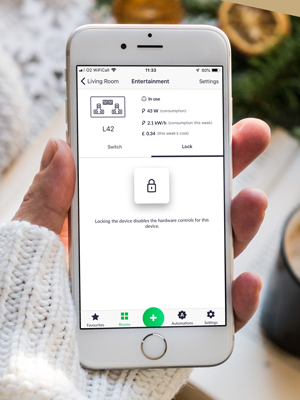
The Link Plus App

Technical Specifications
- Link Plus Dimensions: 110 x 115 x 35 mm
- Socket Dimensions: 150 x 88 x 30 mm
- 3000W, 13A rated
- BS1363 rated
L422 – Lightwave Smart Power Starter Kit (Stainless Steel)
Everything you need to get your smart home started
- Power Starter Kit allows control of all Lightwave devices in your home using your smartphone
- Create timers, scenes, triggers and other automations
- Works with Apple HomeKit, Amazon Echo, Google Home & IFTTT including voice control
- Simple installation: replace your existing sockets using the same wiring
- Smart Socket fits standard 35mm back-box, optional 10mm spacer included
- Lock Smart Sockets for safety
- WiFi router with broadband internet connection required
- Built-in energy monitoring

Magic Button – One Switch to Rule them All
Without any extra wiring, you can create a master switch to turn off every Lightwave device in your smart home. You can create Automations through the Lightwave App to trigger any number of devices at the touch of a button.
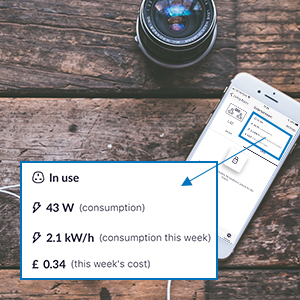
Save Energy the Smart Way
Keep track of your energy use from anywhere using your smartphone. The Lightwave App allows you to monitor energy use of each individual Lightwave Smart Dimmer and Smart Socket. You can identify energy-hungry appliances and create schedules to minimise wasted electricity.
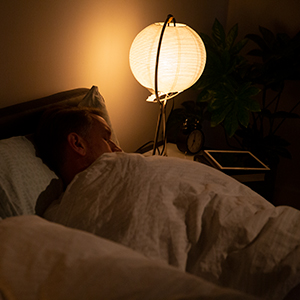
A Gentle Wakeup in the Morning
Simulate a gradual increase in sunlight with floor lamps, desk lamps and other plug in lights; a natural way to start the day. This feature is particularly useful in the winter months. Timers are simple to create using Automations the Lightwave App.
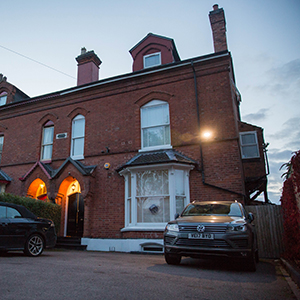
Be Home When You’re Away
Your lights can automatically turn on & off to simulate occupancy while you’re out of the house. A Schedule Automation allows Lightwave devices to behave differently every day of the week. This provides added security while you’re away from home.

Magic Button – One Switch to Rule them All

Save Energy the Smart Way

A Gentle Wakeup in the Morning

Be Home When You’re Away
| | | | |
|---|---|---|---|
Multiple Control OptionsLightwave Smart Home is compatible with all three major voice platforms – Amazon Alexa, Google Assistant and Apple HomeKit (Siri). The Lightwave App is also available on Android or iOS mobile phones and tablets. Whether using voice, app or manual control, Lightwave Smart Home is simple and intuitive. | Simple InstallationLightwave Smart Dimmers and Smart Sockets are simple to install using existing wiring. Simply replace your existing switches and sockets to make your home smart. Consult a qualified expert with any installation concerns. | Magic ButtonCreate an Automation through the Lightwave app to trigger any number of Lightwave devices at the press of a button. You can create a Magic Button to turn on your floor lamps and ceiling lights together. Left a light turned on downstairs? Create a Magic Button on your landing to turn off all downstairs lights before bed. | Why change every bulb?Smart Bulbs are not the only way to gain control of your floor lamps and desk lamps. Lightwave Smart Sockets can be switch on or off by app, voice or manual press of a button. No need to worry If someone accidentally turns off the switch, Lightwave Smart Sockets are always ready to go, whether the switch is on or off. |

About Lightwave
Lightwave is a pioneer brand in the IoT space. Lightwave’s clever devices offer practical and unique solutions through an innovative approach to Smart Home technology. Lightwave products can be retrofitted with no need for additional wiring and allow a world of smart possibilities.
| Weight: | 880 g |
| Size: | Includes Hub |
| Dimensions: | 3 x 15 x 8.8 cm; 880 Grams |
| Model: | L422WH |
| Part: | L422WH |
| Colour: | White Metal |
| Pack Quantity: | 1 |
| Batteries Required: | No |
| Batteries Included: | No |
| Manufacture: | Lightwave RF |
| Colour: | White Metal |
| Quantity: | 1 |
| Size: | Includes Hub |


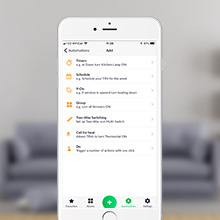

So this system is a bit like Philips Hue.
It uses a hub connected to your router and then various smart devices to help you create a smart home.
The hub was fiddly to install, going back and forth in the app but I did get there after an hour or so of fiddling about. The plug socket was easier. Simply turn off the power, take the old one out, connect the new plug up to power, screw it in place and turn the power back on.
Then it was just connecting that plug up to the hub wirelessly – which was more painless than expected. Now I can control that plug through the app, which is great, but it’s not a revolutionary experience.
I looked at other plug sockets but they were pretty expensive and even the dimmer switches were 60-100.
As such I’ll pass on the rest of the system as I already have Philips Hue and I’m not sure I need all my sockets to be smart.
It’s an interesting system, just a tad too expensive for my liking.
If you aren’t that clued up in electrical DIY I would advise getting a professional to install the socket. If you are competent it very easy to change the socket. Following the instructions it is very easy to set up with your router in fact the only trouble I found was downloading and connecting the app.
I really like that you do not have to rely on the app for control but can still manually use the plug sockets. I haven’t used all the functions available but from what I have used it is a fantastic piece of kit. Once I have the hang of it all I will be buying more sockets to grow the control.
I say potential because the networking occurs within the socket itself, rather than the more common method of making the appliance itself remote. This results in a somewhat interesting dilemma, which is to figure out what you would want to actually plug in and turn off or on from the wall remotely.
While the name of the socket doesn’t as much, the obvious contender is a lamp. No matter whether you’re going on holiday or know that you’ll be back late of a dark evening, we’ve all given this a shot using traditional ‘plug-in’ timers. The question therefore is whether this concept – built into a plug socket – actually enhances the experience. And I can honestly say that I have mixed emotions.
Yes, it works. Wiring the socket is straightforward (at least if you have a modern home) and instructions are provided – though if you plan on doing this yourself, take obvious precautions. Following this you install a wireless transmitter in your home, which connects to your wireless internet router; which in turn connects to an app on your smartphone. Set that up, and you’re in business.
It operates with minimal delay and has, for all the testing I’ve done in home, worked without a hitch. This is obviously reassuring as with it working from a network, you can never be too sure about glitches occurring.
But aside from lamps and perhaps a radio to keep strangers away, I really can’t understand what else I would use the product for.
This is why I can’t necessarily give the socket a bad rating, but at the same time, I can’t recommend it either when there are cheaper alternatives available. And for the few appliances that you may want to operate remotely, they are already beginning to have their own remote technologies built in.
This is a starter set, comprising Smart Socket and Link Plus, and everything you need to install it. The package is very nicely presented, with full-colour installation leaflets smoothing the way from box to completed setup.
The smart socket looks much like a standard dual socket, and fits into a standard 35mm deep back box in the wall. For a shallower back box, a spacer is included to allow installation, but this will make the switch project slightly from the wall. The socket is wired into the ring main as usual. NO other wiring is required. The Link Plus is a bit more involved. It needs a power supply, which could be a spur off the ring main, to a convenient location, but it’s no more complicated than installing a power socket. Once installed, connect it to your wireless router, download the app to a phone, and then following the app instructions to configure the device to work with your system — which at this point will be just the Smart Socket already installed.
All this sounds simple enough, but found the Ethernet stuff a bit confusing at first. The guide on the website proved to be a great help, offering much more information than is in the leaflet. Basically, you pair the Smart Socket with the app, and give that device a meaningful name. It took me a morning to get it all installed and working. The app is not as sophisticated as I had hoped. It just seems a bit basic to me, but it is stable and easy to use. The first time of using this system is something of a revelation — a sudden understanding of the power of this technology to control devices, and indeed the whole house, easily and even remotely.
Having taken the plunge and tried this system and liked what it does, it is of great build quality, the software does what it’s supposed to do, and I am keen to extend the system in my home. Alas, I don’t have the budget to replace every socket and upgrade devices, but components are available in single units, enabling me to do the job as and when I can. Fortunately, you can just switch-over the sockets and devices you want, and keep the existing (old) equipment in place, on a mix and match basis. It’s a great thing to have in the house, but I doubt it will add anything to its value for anyone who doesn’t already know about its benefits.
I have had lightwave generation one light sockets for a few years and love the combination of Sieman’s guts and stylish design along with remote connectivity to control them. The Lightwave version two adds compatibility with apples home kit; sadly it doesn’t carry the version one devices with it but the Lightwave app can control a mixture of devices.
Wiring It up the 2 gang socket in my less than ten year old home was a doddle as the wires were up to code and the colors all matched the diagram in the box. Its not a race to set it up quickly but from powering down my sockets on the consumer unit, checking they were safe with a lamp/ electric tester to wiring in the socket and powering them back on all wired up was less than 5 minutes – and most of that was the long screws holding the plate onto the wall coming on and off.
I chose the power sockets by my desk to test it; seemed the obvious choice to have controllable sockets next to a desk with a lot of devices on it – though when It came to paring the sockets to the app I had made a mistake – the pairing powers down the socket so if your router or in my case a wifi node is plugged in and you are using with the wired lightwave link hub it won’t work as it powers the kit off … Once I had overcome this; and connected my lights and socket to it; I am now able to power them on and off with my voice via Siri and the apple home kit apps.
The new app does the same good job at controlling my lights with the generation one switches and they all paired without an issue which made it a breeze. The app itself is a bit basic; lightwave need to take a look at HomeKit or the newer HUE apps which are cleaner and more attractive – they clearly can do hardware design as even without the smart features the sockets and light switches look really good with the metal finish and minimal buttons.
In the app the lights and switches pair the same way – press and hold the buttons till the lights flash and click the pair button in the app. You can then name each device – in my case desk socket left and right – and then you can check if they are via your device and power them down if you aren’t using them and easily save some energy. Im getting more sockets as Hey Siri turn on the microwave or coffee machine are phrases that have a future to them.
It took me around ten minutes to replace a standard double socket in my lounge with this unit. The instructions were simple and easy to follow and it all feels quite well made.
With the power back on the unit was functional as a socket, with LEDS by each socket telling you the status of each, and press buttons allowing manual control.
I then connected the hub to my router using the supplied cable and plugged in the power supply. It uses a 1A USB feed so you could possibly use the USB socket from your router if you do not have a spare socket, and the supplied adaptor provides a spare 2A feed for charging your phone or similar if you do decide to use it.
I had no problems downloading the Android app to my Galaxy S8+, and within a few minutes I had managed to connect the socket. There was a firmware update which took less than a minute and then I was up and running.
The app is a bit clunky but does allow a good range of control – you can change the colour and brightness of all the LEDs as well as switch the sockets on and off, set timers, create groups and so on. You can even input your electricity tariff and monitor how much each socket is costing you per day/month/all time.
It took me a minute to connect it to my Amazon echo following the simple instructions on the Amazon website, and I can now control my device with my voice. You can even group together different brands of devices and control them with one command. I currently have this, a Sonoff and Samsung Smart Things all grouped into one command for lighting my living room.
So overall I have found this to be an easy to install and reliable kit. I just need to buy more switches now!
If you can set up a smart thermostat like a Nest, you should be OK in setting up this kit. As always when dealing with 204V mains power, know your limitations before getting out the screwdriver.
Setup was OKish, if not as simple as Amazon Alexa, requiring codes from the back of the receiver to be input into the app (iOS only!) and the colour of flashing LEDs checked for status. I was surprised the base unit needs to be left ethernet wired, I assumed it would go wi-fi after set up, but it seems not. Compared to the socket, the base unit looks quite cheap and you’ll want to hide it away.
It was annoying there was two apps listed in the Apple store, neither of which matches the name given in the fold-out getting started guide, another opportunity to use a QR code?
Wiring the socket was as simple as changing any two-gang, it paired quickly then did the inevitable software update. That’s right, your mains sockets need software updates!
Setting up the room name, sensible socket names etc in the app was simple enough, then you can switch on and off via the app, or set a schedule. I intend to use to run a security lamp on a schedule. The socket looks fancy, with ‘soft’ buttons to switch on an off, the LED in the button changes colour to show status.
Next was linking to Apple’s Homekit; very simple, the ‘bridge’ was found and the sockets added to the Home app. TBH the native app has more functionality, e.g. being able to ‘lock’ sockets to prevent manual switching. The app will also tell you the power drawn from the sockets and can translate that to if you input the KWh price.
Last(!) setup was with Alexa, adding the ‘Skill’ to the Alexa app and telling Alexa the login details to your Lightwave account. After that, telling Alexa to ‘Turn on socket one’ worked…almost. The system got out of sync, so the socket was on but asking Alexa to turn it on, turned it off! Rerunning the Lightwave app seemed to sort this, but beware of such glitches.
That glitch side, it all worked pretty well. However, bear in mind all these home automation systems are still for early adopters. Lightwave seems to have hitched their wagon to Apple, no doubt wishing to avoid competing with Google/Nest smart home devices. It remains pricey kit, and Lightwave remains a small company so issues of long term support and software updates of the app must be a factor before you dive in and spend 100s.
I was sufficiently impressed I’m going to take a chance and get the Lightwave radiator valves to finely control the heating.